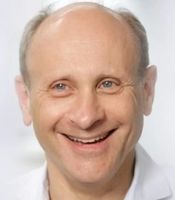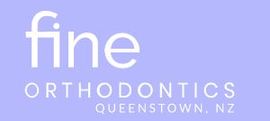Today
Description
Fine Orthodontics has been treating patients for more than 20 years. The team is led by Dr Martin Fine, an orthodontist with experience in managing complex and difficult cases.
Treatments offered include:
Our commitment to technology means you benefit from 3D scanning, digitally customised braces, remote monitoring and faster treatments.
Your wellbeing is at the heart of everything we do. We strive to make sure your time with us is a positive one, and that you get the best possible outcome.
Find out what to expect from your first assessment and throughout your treatment journey. Information about our appointment system can be found here
What is Orthodontics?
Orthodontics is a specialist branch of dentistry concerned with the correction of malocclusions (bad bites) that may cause crooked teeth and/or disproportionate jaw growth. Orthodontic treatment improves physical appearance and self confidence, in addition to providing a healthy functional bite that is more resistant to disease.
Orthodontists diagnose and correct malocclusions. Orthodontists fit orthodontic appliances, in particular braces, and may use other appliances to fix jaw and facial abnormalities. Orthodontics is a recognised specialty of the New Zealand Dental Council and orthodontists have undergone specialist training and additional qualifications.
Dental Team
-

Dr Martin Fine
Orthodontist
Ages
Child / Tamariki, Youth / Rangatahi, Adult / Pakeke, Older adult / Kaumātua
How do I access this service?
Contact us
Make an appointment
Website / App
Fees and Charges Description
The exact fee for your treatment depends upon the complexity of your orthodontic case. We will be able to provide you an exact quote for your needs at your consultation, including information about our flexible payment plans.
Read more here
Hours
| Mon – Fri | 9:30 AM – 5:00 PM |
|---|
Languages Spoken
English
Services Provided
Treatment times vary but are between 1-3 years depending on the severity of the problem, individual characteristics and the cooperation of the patient. Properly aligned teeth and jaws require less dental intervention, improve physical appearance and confidence. Generally your dentist or child’s dental therapist will refer you to an orthodontist. Problems are generally easier to fix at an earlier age before facial growth is complete. Teeth straightening Braces are commonly used to correct crooked teeth and correct malocclusions. Usually, braces are fixed to the outside of teeth; however lingual braces are fixed to the inside of teeth and cannot be seen. Once braces have been removed a retainer may be used to hold teeth in place. This may be either a removable plate or a wire fitted behind the teeth. Sequential plastic aligners are used to correct mild to moderate malocclusions. They are clear removable plastic moulds that fit over your teeth and gradually move your teeth. As your teeth move your aligner will be replaced with the next aligner in the sequence, until the desired position is achieved. For children who have not yet lost all of their primary teeth, a removable appliance may be used. This is a plate held in place with wire clasps that fit over the teeth and wire springs attached to the plate move the teeth. Jaw modification For more severe malocclusions or disproportionately positioned jaws functional appliances or head gear may be required.
Treatment times vary but are between 1-3 years depending on the severity of the problem, individual characteristics and the cooperation of the patient. Properly aligned teeth and jaws require less dental intervention, improve physical appearance and confidence. Generally your dentist or child’s dental therapist will refer you to an orthodontist. Problems are generally easier to fix at an earlier age before facial growth is complete. Teeth straightening Braces are commonly used to correct crooked teeth and correct malocclusions. Usually, braces are fixed to the outside of teeth; however lingual braces are fixed to the inside of teeth and cannot be seen. Once braces have been removed a retainer may be used to hold teeth in place. This may be either a removable plate or a wire fitted behind the teeth. Sequential plastic aligners are used to correct mild to moderate malocclusions. They are clear removable plastic moulds that fit over your teeth and gradually move your teeth. As your teeth move your aligner will be replaced with the next aligner in the sequence, until the desired position is achieved. For children who have not yet lost all of their primary teeth, a removable appliance may be used. This is a plate held in place with wire clasps that fit over the teeth and wire springs attached to the plate move the teeth. Jaw modification For more severe malocclusions or disproportionately positioned jaws functional appliances or head gear may be required.
Treatment times vary but are between 1-3 years depending on the severity of the problem, individual characteristics and the cooperation of the patient. Properly aligned teeth and jaws require less dental intervention, improve physical appearance and confidence. Generally your dentist or child’s dental therapist will refer you to an orthodontist. Problems are generally easier to fix at an earlier age before facial growth is complete.
Teeth straightening
Braces are commonly used to correct crooked teeth and correct malocclusions. Usually, braces are fixed to the outside of teeth; however lingual braces are fixed to the inside of teeth and cannot be seen. Once braces have been removed a retainer may be used to hold teeth in place. This may be either a removable plate or a wire fitted behind the teeth.
Sequential plastic aligners are used to correct mild to moderate malocclusions. They are clear removable plastic moulds that fit over your teeth and gradually move your teeth. As your teeth move your aligner will be replaced with the next aligner in the sequence, until the desired position is achieved.
For children who have not yet lost all of their primary teeth, a removable appliance may be used. This is a plate held in place with wire clasps that fit over the teeth and wire springs attached to the plate move the teeth.
Jaw modification
For more severe malocclusions or disproportionately positioned jaws functional appliances or head gear may be required.
Crooked teeth can result from a combination of factors such as genetics and early loss of primary teeth. People with crooked teeth tend to feel self conscious about their smile and this may negatively impact their daily social interactions. Crooked teeth can also be difficult to clean and may be more prone to decay and gum disease. These problems can be corrected via orthodontic treatment. Malocclusions (bad bites) are predominantly inherited but some are acquired. Inherited problems include crowding of teeth, too much space between teeth, missing or extra teeth and other irregularities of the face. Acquired malocclusions may be caused by injuries, thumb or dummy sucking, dental diseases or early loss of teeth. Malocclusions not only affect the alignment of teeth but also facial development. For more information please view the New Zealand Association of Orthodontists website.
Crooked teeth can result from a combination of factors such as genetics and early loss of primary teeth. People with crooked teeth tend to feel self conscious about their smile and this may negatively impact their daily social interactions. Crooked teeth can also be difficult to clean and may be more prone to decay and gum disease. These problems can be corrected via orthodontic treatment. Malocclusions (bad bites) are predominantly inherited but some are acquired. Inherited problems include crowding of teeth, too much space between teeth, missing or extra teeth and other irregularities of the face. Acquired malocclusions may be caused by injuries, thumb or dummy sucking, dental diseases or early loss of teeth. Malocclusions not only affect the alignment of teeth but also facial development. For more information please view the New Zealand Association of Orthodontists website.
Crooked teeth can result from a combination of factors such as genetics and early loss of primary teeth. People with crooked teeth tend to feel self conscious about their smile and this may negatively impact their daily social interactions. Crooked teeth can also be difficult to clean and may be more prone to decay and gum disease. These problems can be corrected via orthodontic treatment.
Malocclusions (bad bites) are predominantly inherited but some are acquired. Inherited problems include crowding of teeth, too much space between teeth, missing or extra teeth and other irregularities of the face. Acquired malocclusions may be caused by injuries, thumb or dummy sucking, dental diseases or early loss of teeth. Malocclusions not only affect the alignment of teeth but also facial development. For more information please view the New Zealand Association of Orthodontists website.
Disability Assistance
Wheelchair access
Online Booking URL
Parking
Free patient parking at Remarkables Park Town Centre
Website
Contact Details
-
Phone
(03) 555 2127
Email
Website
Book an assessment here
Book an appointmentShop 102-11, Dart House
Remarkables Park Town Centre
Hawthorne Drive
Frankton
Queenstown
Otago 9300
Street Address
Shop 102-11, Dart House
Remarkables Park Town Centre
Hawthorne Drive
Frankton
Queenstown
Otago 9300
Was this page helpful?
This page was last updated at 11:58AM on May 13, 2024. This information is reviewed and edited by Fine Orthodontics.

